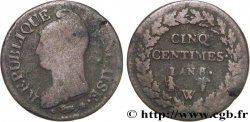fme_868342 - CONSULAT Médaille, Érection de la Colonne Nationale, place Vendôme
200.00 €约 1498.00 CNY
数量
加入购物车

种类 Médaille, Érection de la Colonne Nationale, place Vendôme
日期: 1800
铸币厂名称/城市 75 - Paris
材质 silver plated copper
直径 41,5 mm
模子方针 12 h.
硬币制模工 DUVIVIER Benjamin (1730-1819)
重量 38,10 g.
侧面 lisse
印模 sans poinçon
关于品相的说明
Médaille argentée présentant de nombreux coups et rayures, notamment sur la tranche
正面
正面的文字 BONAPARTE PREMIER CONSUL / CAMBACÉRÈS SECOND CONSUL / LEBRUN TROISME CONSUL / DE LA RÉPUBLIQUE / FRANÇAISE.
正面的说明书 Buste de Bonaparte à droite ; au-dessous, légende en quatre lignes, signé : DU VIVIER.
背面
背面的文字 LE PEUPLE FRANÇAIS À SES DÉFENSEURS // PREMIERE PIERRE / DE LA COLONNE NATION-L / POSÉE PAR / LUCIEN BONAPARTE / MINISTRE DE L'INTÉRIEUR / 25 MESSIDOR AN 8/ 14 JUILLET 1800.
背面的说明书 Légende circulaire et en sept lignes horizontales.
评论
Cette médaille commémore le onzième anniversaire de la prise de la Bastille, le 14 juillet 1789. La construction d'une colonne dédiée à la Nation fut décidée le 20 mars 1800 (29 ventôse an VIII), Bonaparte Premier Consul fit "décréter l'érection, sur la place de la Concorde, d'une Colonne Nationale sur laquelle on inscrirait les noms de ceux qui auraient rendu des services importants à la Patrie", coll. Essling n° 848. Cette colonne ne fut jamais élevée. En revanche, Lucien, frère de Napoléon Bonaparte, posa sur la place Vendôme le 14 juillet 1800 la première pierre de la Colonne qui sera ensuite élevée à la gloire de Napoléon Ier. Il faudra encore attendre plus de trente ans pour voir une colonne sur la place de la Bastille qui ne commémore pas la prise de la Bastille, mais les journées de juillet 1830, qui virent la chute de Charles X et son remplacement par Louis-Philippe, connues sous le nom des "Trois Glorieuses". Au droit de notre médaille, Bonaparte est figuré seul, en habit de premier Consul tandis que Cambacérès et Lebrun sont rejetés à l'exergue et dans la légende. Au revers, pour l'une des premières fois, le calendrier républicain côtoie le calendrier grégorien qui fait sa réapparition. Il faudra néanmoins attendre le 1er janvier 1806 pour qu'il remplace définitivement le calendrier révolutionnaire.








 对产品描述纠错
对产品描述纠错 打印
打印 分享我的选择
分享我的选择 提问
提问 Consign / sell
Consign / sell
 产品介绍
产品介绍









